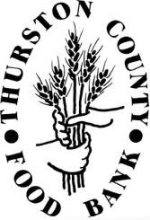Once you have established a gleaning program and have fresh vegetables and fruits coming through your food bank doors, it is important to make sure that clients know how to prepare and cook with the produce.
When you develop a great gleaning partnership, it is inspiring and motivating to redirect so much beautiful and healthy produce to your food bank, and as gleaners we want to accept it all. However, clients at our food banks may not be used to receiving diverse types of vegetables. This is why it is important to support your clients and food bank volunteers as you introduce potentially unfamiliar produce. Some ways to do this are through education and demonstrations on how to prepare and process vegetables, and by providing visual and written recipe cards and cooking instructions.
Tell your food bank volunteers about the vegetables you brought in and from which farms. This will enhance the relationship clients can form with the food they’re receiving by knowing it came from a local farm. It may also be helpful to have volunteers ‘pitch’ the produce, exclaiming about how much they enjoy making (insert vegetable here) for their own family with quick tips for cooking or preparing. This also enhances your volunteer and client connections.
To understand how your clients perceive the gleaned produce, it is worth the time to spend a shift distributing it. This will give you insights to the challenges your volunteers may have in “selling” certain items, and learn what items are most popular. This will also allow you to gauge clients’ initial reactions to fresh produce.
To build capacity for fresh produce and nutrition, Thurston County Food Bank contracted a SNAP-ED component serving adults and youth. SNAP-ED stands for Supplemental Nutrition Assistance Program Education, and has provided many opportunities for educating clients through food demonstrations, nutrition education classes, resources including handouts and poster displays, and a presence in schools. The staff making the food samples coordinates with volunteers and gleaners to evaluate what produce will be distributed. They want to ensure the produce clients receive is included in the recipes they are sampling, to address misconceptions clients may have of new and different produce.

